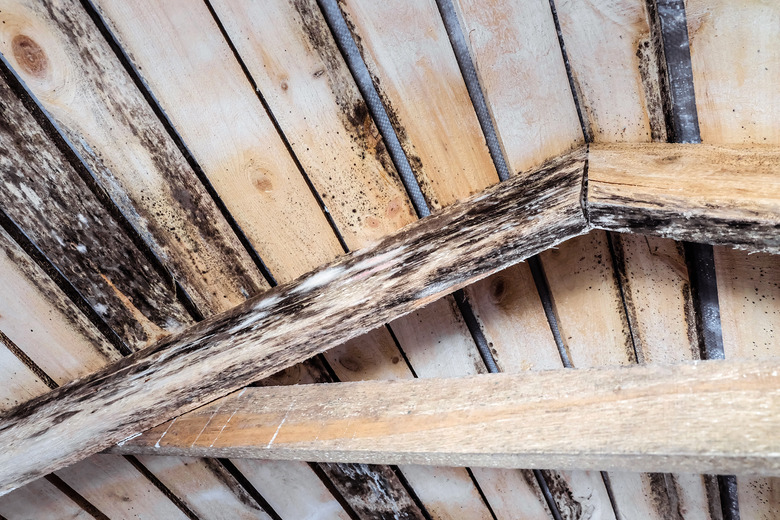How To Kill Existing Mold Fungus In Wood
We may receive a commission on purchases made from links.
Wet wood is an excellent place for mold to grow, so it's not unusual to find mold fungi in wood whether it's wooden furniture or wood used to build your house. Mold spores are naturally found in the air, and they like to settle and grow in moist areas. When you see mold fungus on wood or smell a musty odor that indicates mold, you should follow mold removal steps.
Things Needed
-
Rubber gloves
-
Protective clothing
-
Fan or hair dryer
-
Rag or scrub brush
-
Rubber gloves
How to Remove Mold Fungus in Wood
1. Wear Personal Protective Equipment
Before beginning the mold removal process, don personal protective equipment, such as an N95 respiratory mask, rubber gloves, safety goggles without vent holes, a long-sleeve shirt, pants, and work boots.
2. Dry the Wood
Use a fan, hair dryer, or other methods of circulating air to dry out the mildewed wood.
3. Clean
the Mold off the Wood
Mix 8 to 10 tablespoons of washing soda or trisodium phosphate with a gallon of water. Wet a rag or scrub brush with the solution and scrub the wood to remove the mold.
4. Remove Paint if Necessary
If you discover mold has grown under the paint or shellac on the item, use a paint scraping tool to remove the paint or shellac. Then wash the item again with a mixture of 8 to 10 tablespoons of washing soda or trisodium phosphate, 1 cup of chlorine bleach, and a gallon of water.
5. Rinse and Dry the Wood Item
Rinse the washing solution from the item by rubbing it with a clean cloth dampened with clean water. Allow the wood to dry completely.
6. Repaint the Wood if Needed
Apply mold- and mildew-resistant paint to the wood item if desired.
Preventing Mold in Your Home
Preventing Mold in Your Home
Mold grows in moist areas, so the best way to prevent the growth of mold fungus on wood items in your home is to reduce the level of moisture in your house. There are several steps you can take to limit moisture in your home.
- Use a dehumidifier or air conditioner
to reduce humidity in the house. - Repair problems that could be adding
moisture to your home's air. Common problems to look for include leaking pipes,
a leaking roof, and windows that let in moisture because they don't fit properly
or are cracked. - Use ventilating fans in areas of the
home where moisture is frequently found, including the laundry area, bathroom,
and cooktop.
If your home experiences any flooding, whether from heavy rain or a broken pipe or water heater, clean and dry the area as quickly as possible. Use a wet vac to remove as much water as possible and then start drying the area with fans. Mold can begin to grow within a day, so it's important to act quickly.
Warning
Never mix bleach with ammonia or any products containing ammonia.
